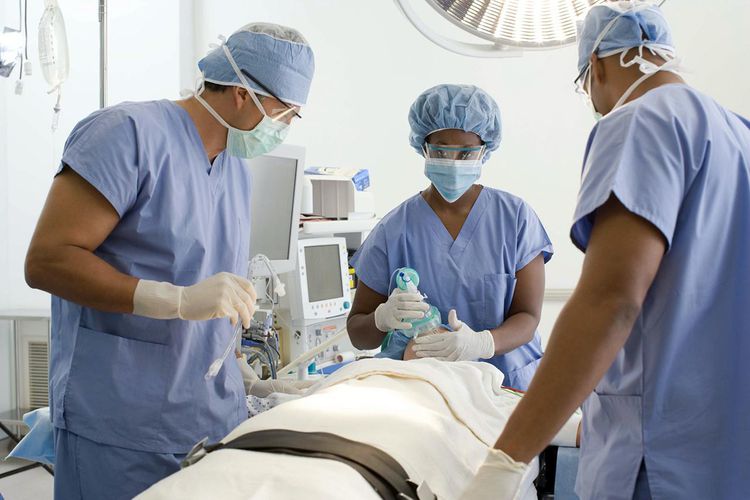Rectal Prolapse: Symptoms, Causes, Treatment
What are the symptoms of rectal prolapse?
Rectal prolapse occurs when the rectum, which is the last part of the large intestine, protrudes through the anus. The symptoms of rectal prolapse can vary depending on the severity of the prolapse, but common symptoms may include:
- Protrusion of Tissue: The most noticeable symptom of rectal prolapse is the protrusion of tissue through the anus. Initially, this may occur during bowel movements and then return to its normal position. However, as the condition progresses, the protrusion may become more frequent or even occur spontaneously.
- Pain or Discomfort: Rectal prolapse can cause pain or discomfort, especially during bowel movements or when sitting.
- Bleeding: Bleeding from the rectum may occur due to irritation or injury to the prolapsed tissue.
- Incomplete Bowel Movements: Some people with rectal prolapse may feel like they are unable to completely empty their bowels.
- Mucus Discharge: A discharge of mucus from the rectum may occur, particularly if the prolapse is associated with other conditions such as inflammatory bowel disease.
- Incontinence: Severe cases of rectal prolapse can lead to fecal incontinence, which is the inability to control bowel movements.
- Constipation or Straining: Chronic constipation or straining during bowel movements may increase the risk of developing rectal prolapse.
It’s important to note that rectal prolapse is different from hemorrhoids, which are swollen veins in the rectum that can cause similar symptoms. If you experience any symptoms of rectal prolapse, it’s important to see a healthcare provider for a proper diagnosis and appropriate treatment.
What are the causes of rectal prolapse?
Rectal prolapse occurs when the rectum, which is the last part of the large intestine, becomes stretched or weakened and protrudes through the anus. There are several factors that can contribute to the development of rectal prolapse, including:
- Chronic Constipation: Chronic constipation, which is a condition characterized by infrequent or difficult bowel movements, can lead to straining during bowel movements. This straining can put pressure on the rectum and contribute to the development of rectal prolapse.
- Chronic Diarrhea: Chronic diarrhea, which is a condition characterized by frequent and watery bowel movements, can also contribute to the development of rectal prolapse by weakening the muscles and tissues of the rectum.
- Weakness of Pelvic Floor Muscles: Weakness of the muscles in the pelvic floor, which support the rectum and other pelvic organs, can increase the risk of rectal prolapse.
- Aging: The risk of rectal prolapse increases with age, as the muscles and tissues in the pelvic area may weaken over time.
- Childbirth: Women who have given birth vaginally may be at increased risk of rectal prolapse due to the strain placed on the pelvic floor muscles during childbirth.
- Previous Pelvic Surgery: Previous surgery in the pelvic area, such as surgery for hemorrhoids or rectal cancer, can weaken the muscles and tissues of the rectum and increase the risk of rectal prolapse.
- Genetic Factors: Some people may have a genetic predisposition to developing rectal prolapse, although the specific genetic factors involved are not well understood.
Rectal prolapse is more common in women than men, and certain conditions, such as cystic fibrosis, can also increase the risk. It’s important to consult with a healthcare provider for a proper diagnosis and appropriate treatment if you suspect you have rectal prolapse.
What is the treatment for rectal prolapse?
The treatment for rectal prolapse depends on the severity of the prolapse and may include conservative measures, such as lifestyle changes and pelvic floor exercises, or surgical intervention. The goal of treatment is to reduce symptoms, improve quality of life, and prevent complications.
- Lifestyle Changes: Making changes to your diet and bathroom habits can help manage rectal prolapse. Eating a high-fiber diet can help prevent constipation, which can reduce the risk of prolapse. Drinking plenty of water and exercising regularly can also help keep bowel movements regular.
- Pelvic Floor Exercises: Pelvic floor exercises, also known as Kegel exercises, can help strengthen the muscles of the pelvic floor and improve bowel control.
- Medications: Your healthcare provider may prescribe medications to help manage symptoms of rectal prolapse, such as stool softeners to prevent constipation or medications to reduce swelling and inflammation.
- Biofeedback: Biofeedback is a technique that can help you learn to control your pelvic muscles. It involves using sensors to provide feedback on muscle activity, which can help you improve muscle function.
- Surgery: In some cases, surgery may be necessary to repair a rectal prolapse. The type of surgery will depend on the severity of the prolapse and your overall health. Surgical options may include:
- Rectopexy: This procedure involves surgically attaching the rectum to the surrounding tissues to prevent it from prolapsing.
- Resection: In some cases, a portion of the rectum may need to be removed if it is severely prolapsed or damaged.
- Altemeier Procedure: This procedure involves removing the prolapsed portion of the rectum and then reattaching the remaining rectum to the anus.
It’s important to consult with a healthcare provider for a proper diagnosis and to discuss the most appropriate treatment options for your specific situation. Early intervention can help prevent complications and improve outcomes for rectal prolapse.




